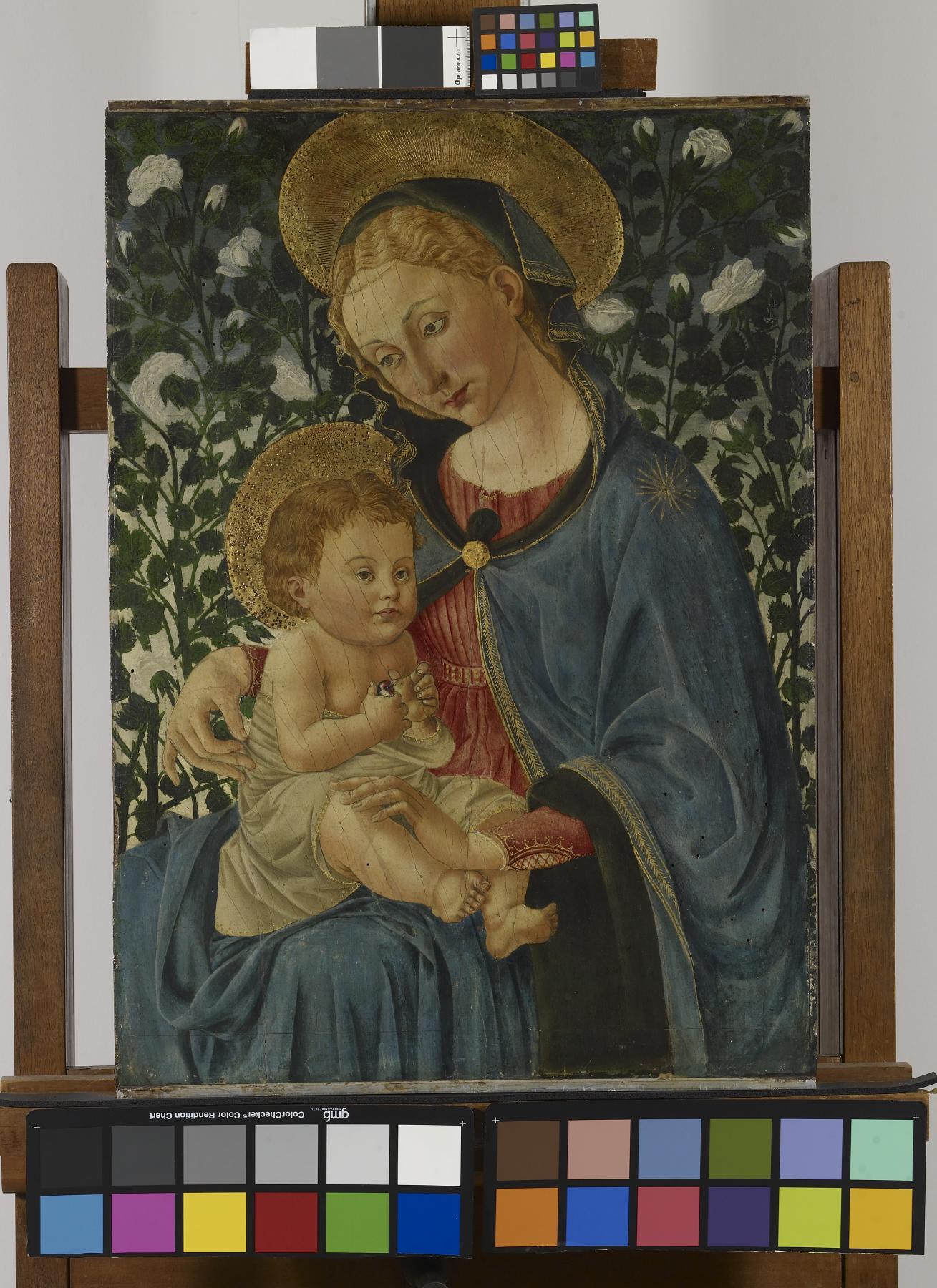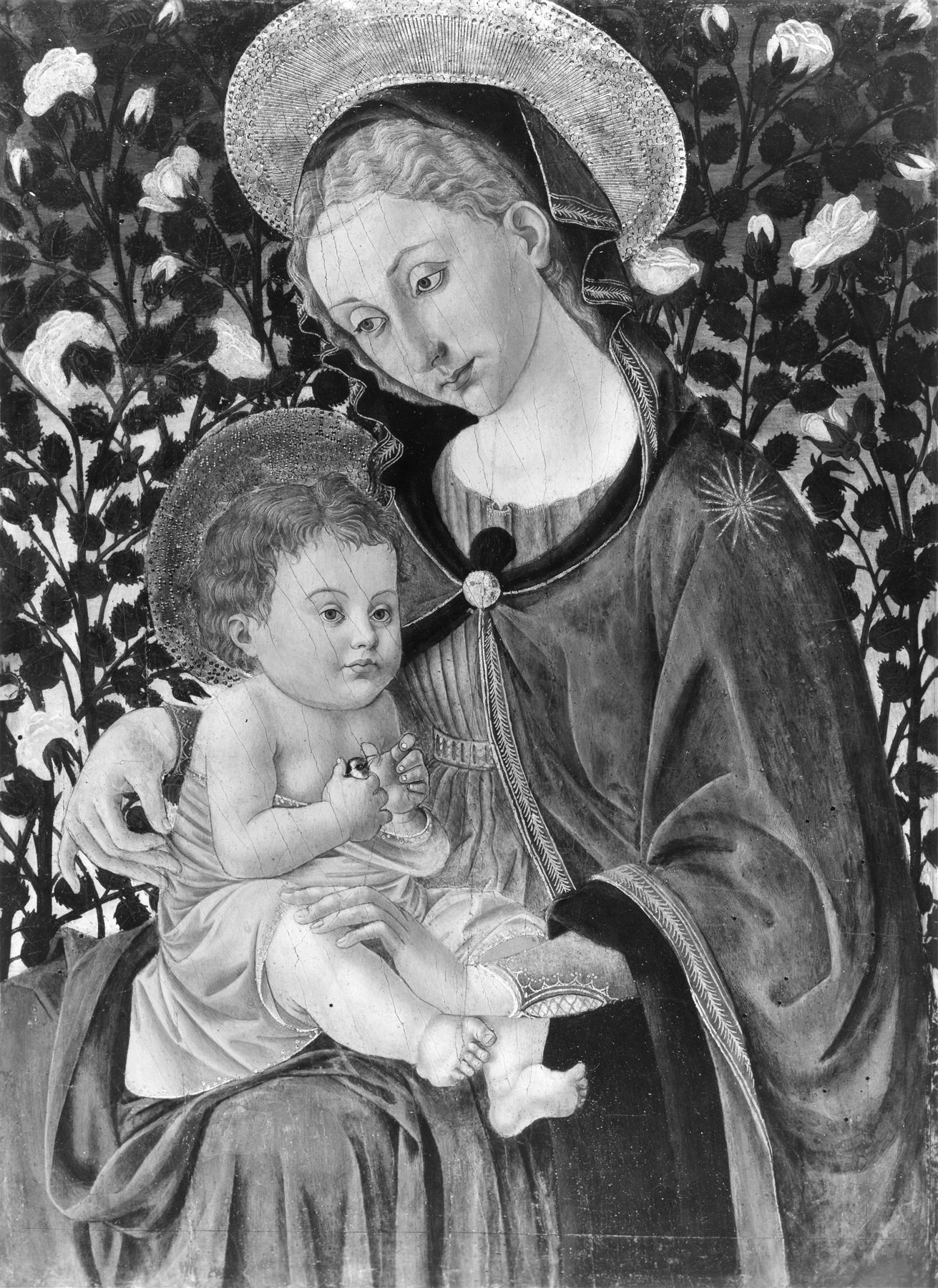Virgin and Child with White Roses
(Renaissance Europe )
Half-length images of the Virgin and Child were extremely popular in the Italian Renaissance home, where they would serve as the focus for daily prayer and devotion. This intimate example, in which the Madonna steadies the Christ Child on her knee while tenderly adjusting his swaddling clothes, is rich in symbolism. The figures are placed before a hedge of white roses, symbolic of Mary’s purity. Her shoulder is a decorated with a gold star, a reference to the popular prayer dedicated to her called the “Stella Maris,” or “Star of the Sea.” The Christ Child clasps a tiny goldfinch, an allusion to his future death and resurrection (according to legend, the bird plucked a thorn from Christ’s crown at the crucifixion and became stained with his blood).
The painting was executed in the second half of the 15th century in the workshop of the "Pseudo Pier Francesco Fiorentino," an anonymous artist whose works used to be confused with those of the real Pier Francesco Fiorentino (1444-after 1497). This workshop specialized in the serial production of Madonna and Child paintings for domestic interiors, often copying examples by more famous Florentine artists. This example is based on a picture by Francesco Pesellino (1422-1457) in the Isabella Stewart Gardner Museum in Boston.
Provenance
Provenance (from the French provenir, 'to come from/forth') is the chronology of the ownership, custody, or location of a historical object. Learn more about provenance at the Walters.
Dikran Kelekian, New York and Paris [date and mode of acquisition unknown]; Henry Walters, Baltimore, 1926, by purchase; Walters Art Museum, 1931, by bequest.
Conservation
| Date | Description | Narrative |
|---|---|---|
| Examination | examined for condition | |
| Technical Report | examined for technical analysis | |
| 4/7/1943 | Treatment | cleaned; loss compensation; coated; other |
| 1/1/1953 | Examination | examined for condition |
| 10/1/1991 | Examination | examined for condition |
| 10/11/1991 | Examination | examined for condition |
| 1/1/1998 | Treatment | loss compensation |
Geographies
Italy, Florence (Place of Origin)
Measurements
Painted surface H: 25 3/16 x W: 18 1/16 x D: 3/8 in. (63.9 x 45.8 x 0.9 cm)
Credit Line
Acquired by Henry Walters, 1926
Location in Museum
Not on view
Accession Number
In libraries, galleries, museums, and archives, an accession number is a unique identifier assigned to each object in the collection.
In libraries, galleries, museums, and archives, an accession number is a unique identifier assigned to each object in the collection.
37.1028






